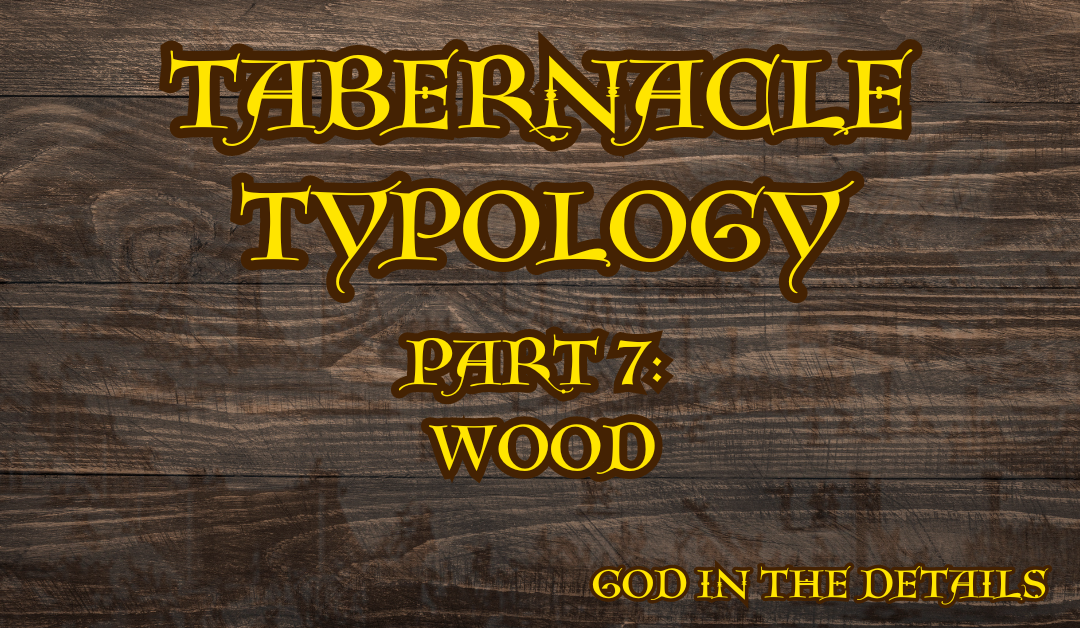Ex. 25:1-9: (KJV)
And the Lord spake unto Moses, saying, “Speak unto the children of Israel, that they bring me an offering: of every man that giveth it willingly with his heart ye shall take my offering.And this is the offering which ye shall take of them; gold, and silver, and brass,And blue, and purple, and scarlet, and fine linen, and goats’ hair,And rams’ skins dyed red, and badgers’ skins, and shittim wood, Oil for the light, spices for anointing oil, and for sweet incense, Onyx stones, and stones to be set in the ephod, and in the breastplate. And let them make me a sanctuary; that I may dwell among them.
Wood from the Shittah Tree – later classified as a type of Acacia – was used in the construction of the Tabernacle. These trees were common in the Sinai Desert and in the Jordan River Valley.
It was a light, but hard and durable wood – known for its strength and its natural resistance to insects and decay.
In ancient Egyptian and Israelite tradition it represented endurance and immortality – because of its evergreen nature.
Because of its resistance to decay it also represented integrity and purity.
It represents the perfection of Jesus and God’s covenant with His people. Strong and unyielding, enduring and steadfast.
The shittim wood symbolizes Jesus as the Holy One of God who saw no corruption. (Psalm 16:10). It typifies His purity, where He was likewise to His brethren, but without sin. (Heb 4:15)
Jesus was in the desert – much like the Shittim trees that grow in the Wilderness – and did not bend, nor did He break when faced with temptation.
Just like these trees grow in desolate and dry places – providing shade from the desert sun – so Jesus is our shelter in the wilderness – our covering.
Another interesting ‘point’ – mind the pun – has to do with the thorny nature of the tree. As Charles Loder shares: “shittîym comes from שׁטֵט shôtêt “to pierce” (Strong’s #7850), for Christians, therefore, Shittim may hint to the piercing of Christ on the cross and his crown of thorns. The root verb also means to whip and scourge, another feature of Christ’s trial and crucifixion.”
A last inference I would like to share comes from the fact that the shittah tree is a source of gum arabic – which is used for a variety of products, but also has medicinal effects.
Just like medicine can be taken from this tree, so also healing is found in Christ.
He is our healer, our shelter – the One pierced for our transgressions and scourged for our iniquity – the Mighty One who saves. He is our strength in weakness. The Perfect and Spotless Lamb of God, incorruptible and holy. Steadfast and unchanging – His love is unyielding and eternal.
Reflect:
- How does the Shittim wood and the symbolism thereof speak of Christ in us? What does this mean in the life of the believer?
- What does it mean to be incorruptible? How much of this quality do you possess? Is there any way in which we – through the practice of Spiritual Disciplines – can bolster our faith to be more resistant to drought, decay and the insects of temptation?
Prayer: Lord, be my strength in weakness. Just like shittim wood is strong and resistant to decay, strengthen me against temptation, keep me standing in times of trouble, and preserve me in trial and tribulation so that I may endure to the very end and have eternity with You. Let me find rest in Your unfailing and unyielding love. Be my shelter in the wilderness of life and let me abide in You forever. In Jesus Name. Amen.

